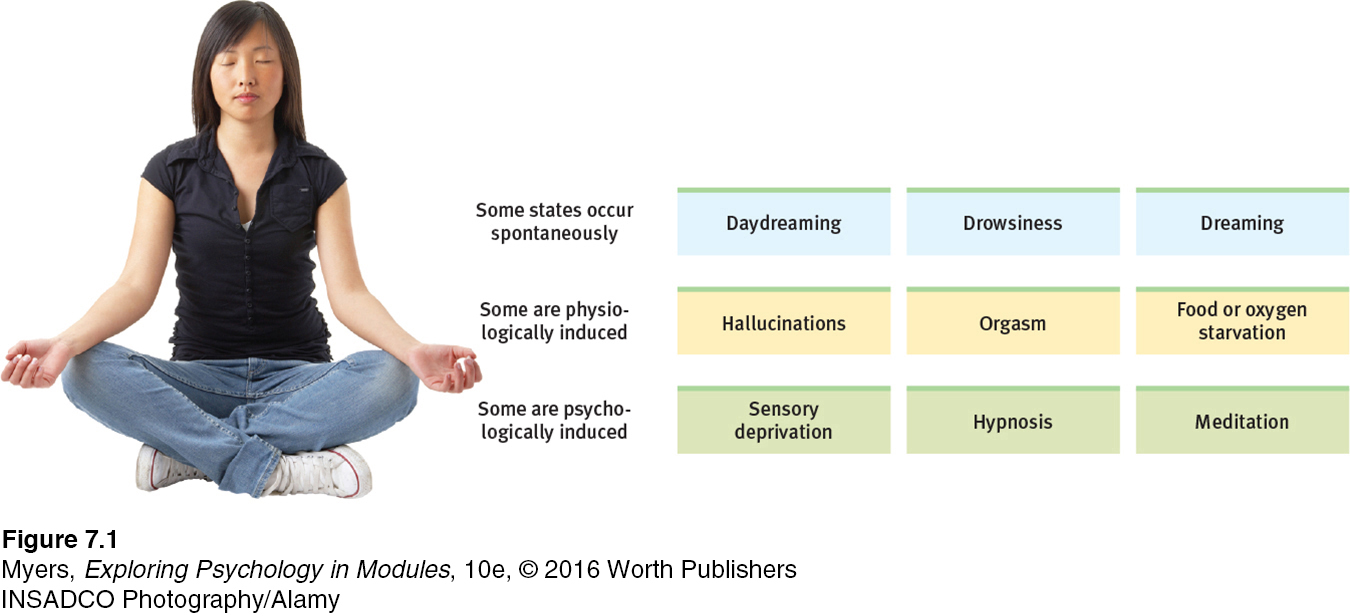7.1 Defining Consciousness
7-
At its beginning, psychology was “the description and explanation of states of consciousness” (Ladd, 1887). But during the first half of the twentieth century, the difficulty of scientifically studying consciousness led many psychologists—
“Psychology must discard all reference to consciousness.”
Behaviorist John B. Watson (1913)
After 1960, psychology began regaining consciousness. Neuroscience advances linked brain activity to sleeping, dreaming, and other mental states. Researchers began studying consciousness altered by drugs, hypnosis, and meditation. (More on hypnosis in Module 18 and meditation in Module 34.) Psychologists of all persuasions were affirming the importance of cognition, or mental processes.
consciousness our awareness of ourselves and our environment.
Most psychologists now define consciousness as our awareness of ourselves and our environment (Paller & Suzuki, 2014). This awareness allows us to assemble information from many sources as we reflect on our past, adapt to our present, and plan for our future. And it focuses our attention when we learn a complex concept or behavior. When learning to drive, we focus on the car and the traffic. With practice, driving becomes semi-
